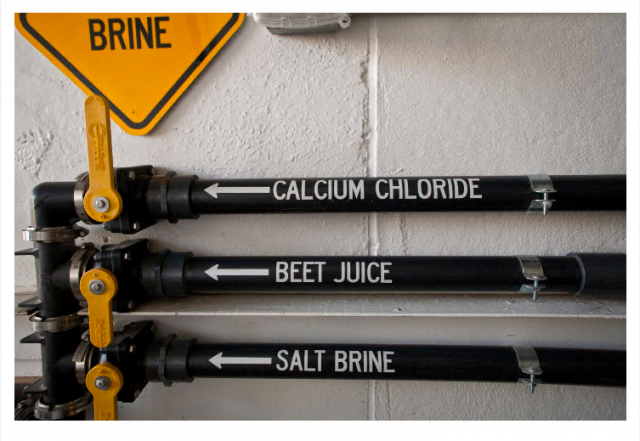Make 2021 a Conservation New Year
Road salt can harm the environment
Highway ditches, marshes, streams, bays, and lakes lie alongside many of the roads and highways that zigzag across North America. Plants and animals inhabit these water bodies and can be exposed to many of the substances we put on those roads, including road salt.
Although rock salt may help keep roads safe it can also have serious, negative effects on aquatic ecosystems.
At high concentrations, salt can be fatal to some aquatic animals. Salt can also change the way the water mixes and lead to the formation of salty pockets near the bottom of lakes, creating biological dead zones. The USGS pinpointed road as toxic to aquatic life, and even low concentrations can produce harmful effects in freshwater ecosystems. High chloride levels in water can inhibit aquatic species’ growth and reproduction, impact food sources. In a recent study, researchers found that 37 percent of the drainage area of the contiguous United States has experienced an increase in salinity over the past 50 years, citing road salt as the dominant source in colder, humid regions of the northeastern United States.
Try these alternatives
Sand: – Although sand is not capable of actually reducing the freezing temperature of the water and cannot melt snow and ice, it is still a great alternative to traditional rock salt. The grainy nature of sand allows for excellent traction. Sand is completely natural and will not cause any damage to your property. In addition to this, sand does not form a brine with frozen snow and ice, so less material is needed over time. This is also significant savings.
Beet juice – After sugar is extracted from sugar beets, the resulting waste water is usually flushed down the drain. But more places around the world are mixing this beet juice with their de-icing cocktails for more effectiveness. Using beet juice mixed with salt reduces the amount needed. It’s also biodegradable and less corrosive. The concentration of carbohydrates in the liquid reduces its freezing point to well below -20 C. When mixed with salt, it makes it stick to the ice, which reduces bouncing and scattering of salt rocks when cars drive over it.
Calcium magnesium acetate (CMA) – CMA is formulated from dolomitic lime and acetic acid. It is effective to a temperature of ~0° F, but effectiveness decreases below 20° F. Like rock salt, it is generally available in granule or pellet form. There is some concern about its oxygen demand as it degrades in water, but a USGS study in Oregon found no negative water quality impacts from roads treated with CMA. Other acetate-based de-icers include Sodium Acetate and Potassium Acetate.
Ashes – For those with a wood-burning fireplace, ashes are a great option. They provide a lot of traction and absorb sunlight, so will melt ice quickly on a sunny day
Pet Safe –Pet-safe commercial deicers are designed to melt ice without harming pets. “Pet-safe” deicers are typically made with an ingredient called urea. Urea is less toxic than other deicing ingredients, but it can still cause issues if not processed specifically for pet safety. Remember to always check the label; the product should be salt- and chloride-free and labeled as child and pet-safe. If it’s not safe for kids, it’s not safe for your dog.
Every little thing YOU do really makes a difference, these small changes cumulatively over time can have a significant benefit to our environment.


